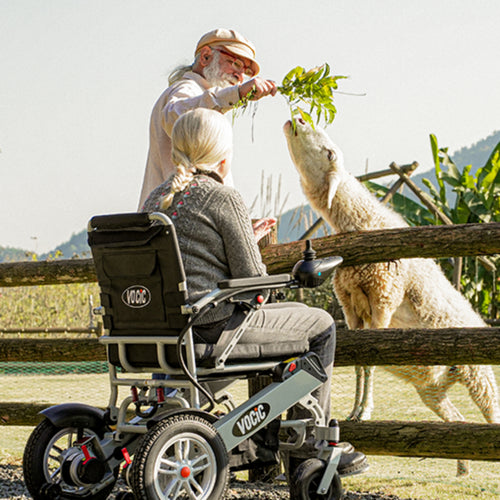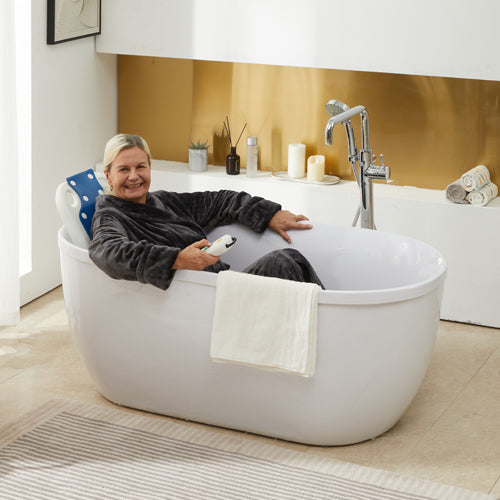Safely lifting and transferring overweight elderly people requires proper techniques and specialized equipment to prevent injury and ensure a comfortable transfer. This article will introduce basic methods and tools in lifting and transferring, such as mechanical lifts and transfer aids, to understand how these tools can improve the installation of the transfer process.
How Do Lift a Heavy Person off the Floor?
Safely lifting and transferring an overweight person off the ground requires careful planning and execution to avoid the risk of injury. Here are some suggested steps for lifting:
-
Assess the Situation: When a person falls and cannot get up, you need to quickly assess the person's health and state of consciousness. If they are injured or unable to assist with the lift, it is recommended to seek medical help before attempting to move them.
-
Prepare the Area: You need to clear the surrounding area of obstructions to create a safe space for the lift. You also need to ensure that the floor is dry and free of slip hazards.
-
Use the Correct Lifting Technique:
Communication: You need to let the other person know what you want to do before lifting so that they are prepared and as cooperative as possible.
Posture: Stand with your feet shoulder-width apart, one foot slightly forward, and stay stable. Also, keep your back straight and bend your knees.
Lifting with your legs: Use your core muscles, and be careful to lift with your leg muscles instead of your back muscles. This can reduce the risk of injury.
Turn, don't twist: After lifting the person, turn with your feet, not twisting your back, otherwise, it will cause strain or injury.
-
Use Lifting Aids: If a lift is available, it is recommended to use tools such as lifting straps, transfer boards, or lift chair for elderly. Equipment such as portable floor lifts or inflatable lifting pads can also safely lift heavier people off the ground. Not only do these devices make lifting safer, but they also reduce physical strain on the caregiver.
-
Lower Safety: Once standing or in the desired position, make sure to lower the person safely back into the chair or bed. However, this requires maintaining your lifting posture - using your legs and keeping your back straight.
-
Seek Training: If regular lifting is part of your caregiving duties, it is recommended that you receive professional training in lifting and transfer techniques. This can help prevent injuries and increase your efficiency and confidence in handling such situations.
Caregivers or family members need to be trained in proper weightlifting techniques, especially if there is an overweight elderly person in the home. Training can not only provide the correct methods to prevent injuries but also provide safe ways to lift weights. Finally, the use of appropriate weightlifting equipment to assist with lifting and transferring needs can also be considered to ensure safety.

What Equipment Is Available to Help Lift an Elderly Person?
To prevent falls in the elderly, manual transfer is cumbersome and unsafe. Transfers can be made using mobility aids. There are now several types of equipment that can help lift the elderly or overweight patients, thereby improving safety and reducing physical stress on caregivers:
-
Hoyer Lifts: These mechanical lifts are often used in the nursing field. They can be manually or battery powered and utilize a sling to safely wrap and lift a patient from one place to another, such as using VOCIC's AY02 Hoyer Lift to lift a patient from a bed to a wheelchair.
-
Ceiling Lifts: These lifts are ceiling mounted, which saves floor space and can handle heavy loads. These lifts are suitable for everyday use and require no effort from the caregiver.
-
Transfer Boards: These transfer boards facilitate a smooth transition between two close surfaces, such as from a wheelchair to a bed, by providing a sturdy sliding surface.
-
Portable Floor Lift: Similar to the Hoyer lift, but it is designed for temporary or portable use, this floor lift has wheels so it can be easily moved around your home or facility, making it ideal for different environments.
-
Maidesite AX05: This versatile floor lift provides a stable and secure lifting mechanism for home care bed mobility. It also has adjustable settings to accommodate different heights and weights, ensuring comfort and safety during transfers.
-
Transfer Plate: This rotating plate helps the caregiver turn the standing individual, which allows for safer and easier transfer to another seat or position.
Each device has unique advantages and can help to safely transfer individuals with limited mobility, keeping both the person being transferred and the caregiver safe.

Choosing the Right Mobility Aid
Choosing the mobility aid to lift and transfer elderly or overweight patients ensures safety, comfort, and fit for the user during transfer. Here are the key considerations for choosing the best equipment:
-
Assess mobility level: Choosing the right mobility aid starts with assessing the patient’s physical abilities. If they can partially support their own weight, consider a standing-assisted lift. For patients who need more comprehensive support, a full-body lift may be necessary as it provides more stability and safety.
-
Understand the different types of lifts: When choosing a lift for a patient who needs assistance, it is important to understand if each lift type will fit your needs. This ensures that the patient’s environment can accommodate the lift, that there is enough space for easy operation, and that doorways of appropriate width are recommended if a large lift is used.
-
Assess specific needs: Depending on the patient’s condition, different tools may be needed, such as a transfer board for someone with some mobility or a specialized sling for a specific need, such as bathing. Choosing the right tools reduces risk and increases comfort during transfers.
-
Ease of use: The lift should be easy for the caregiver to operate, preventing fatigue and ensuring efficient transfers. This allows for simple controls and minimal physical effort.
-
Budget and maintenance: Balance the initial cost of the lift with the long-term maintenance and operating costs. Consider the availability of replacement parts and the basic maintenance required to keep the lift in good working order.
-
Consult a healthcare professional: Finally, it is recommended to consult a healthcare professional to get tailored advice based on the patient’s specific health conditions and mobility requirements. This can ensure that the mobility aid selected is appropriate and helpful.
By evaluating these factors, you can select a mobility aid that not only meets your patient’s physical requirements but also provides safe and comfortable transfers, improving their quality of life.
Post-Transfer Considerations
After transferring an elderly or overweight patient, here are four common post-transfer considerations to focus on to ensure their health and comfort:
-
Comfort and Positioning: Check that the patient is comfortable and positioned correctly immediately after the transfer. Adjust their position promptly to prevent pressure sores and ensure they are stable and secure in the new position.
-
Monitor for Pain or Discomfort: Watch for any signs of discomfort, pain, or distress after the transfer. This includes observing their skin for any underlying issues and ensuring their circulation is not impeded by the new position.
-
Reassess the Equipment and Techniques Used: Assess the effectiveness of the equipment and techniques used during the transfer. Consider whether future transfers need to be adjusted to improve safety and comfort.
-
Communication and Feedback: Maintain open communication with the individual and ask for their feedback on the transfer process. This can understand their experience and provide insights for improving future transfers.
These steps ensure that the safety and efficiency of each transfer improve over time.
Conclusion
In summary, lifting and transferring overweight older adults requires careful attention to technique and appropriate use of specialized equipment, with ongoing assessment required to ensure safety and comfort before use. Through these practices, caregivers can safely assist overweight older adults while reducing risk to themselves and those they care for. Mobility assistive devices such as lift chairs and transport wheelchairs not only improve safety but also maintain the dignity and quality of life of the elderly being assisted.
If you are looking for reliable and effective lifting solutions, you can take a look at the Maidesite AX05 model lift, which offers products that meet these needs. These devices ensure both safety and ease of use. As this product is already available on vocic.com, you can go directly to the VOCIC official website to purchase it, or learn more about its products and how they can help improve mobility with dignity and care.
Related Reading: How to Get a Lift Chair Through Medicare?







